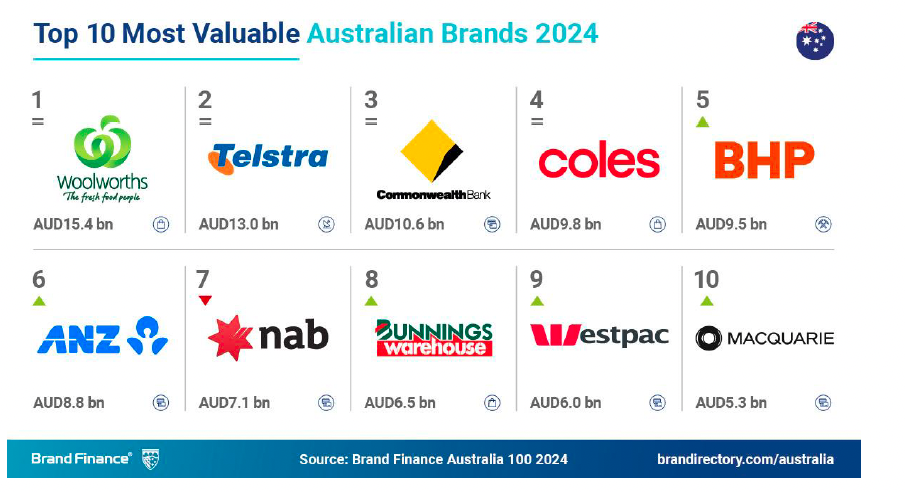From mid-level to CMO: Top recruiters on 2025 jobs outlook for marketers – where’s the demand, hot skills now and next, emergent new roles
What you need to know:
- Recruiters are citing a conservative upswing in marketing job recruitment from top to bottom off the back of interest rate cuts and a regearing of corporate Australia towards growth, not just cost cutting.
- Yet with the talent pool as competitive as ever, it remains a buyer’s market for now, with hundreds of applications still the norm for marketing jobs at the midlevel.
- For CMOs, the added challenge – apart from being at the pointy end of hiring – is the fact many CEOs and HR leaders don’t know what they need or are hiring for as a result of the ever-diverse and expanded CMO remit. This has led some recruiters needing to spend more time on gauging the level of marketing understanding within a company and its CEOs before bringing a larger shortlist of candidates to the table.
- What all recruiters agree however, is growth – and highly commercially-fuelled growth at that – is the one consistency across what they’re seeing in briefs right now, whatever the industry sector. This is extending from CMO down into head of / VP / 2IC roles.
- AI, digital transformation and data skills are also all in-demand, even if the job titles haven’t caught up yet. The goods news is AI is seen as a productivity tool and efficiency enabler – at this point – for existing headcount, not as a direct replacement for humans.
- But this combination of evolving skill set, commerciality and role for marketers thanks to more end-to-end CX as well all means continuous learning loops, people skills and adaptability are all high on the must-have list for marketing job hunters.
If you have somebody who knows how to harness [data and AI] to drive short-term revenue, CEOs and CFOs love you right now. Do I think it will be like that for the rest of the year? It will be prevalent, but I think some other roles will start to come back to the fore. I think content is going to become powerful again, and content is very closely related to brand.
Recruiters see the market for marketing jobs in 2025 perking up thanks to corporate Australia finally starting to shift away from cost-cutting and towards growth. It doesn’t mean the briefs on who to hire are getting any easier, however, especially at the top end of town.
The remit for a CMO can be narrow or broad, depending on the CEO’s own understanding (or lack of understanding ) of marketing and what it can deliver. Nor is the candidate pool shrinking, with plenty of solid talent now on the hunt for new roles. The one consistency all recruiters cite is a laser focus on commercially aligned marketing priorities at the most senior level, meaning marketing leaders must firmly orient towards both efficiency and effectiveness.
Further down the pecking order, things are even brighter with more job openings, according to the job placement orchestrators.
One trend more prevalent than ever is the need to balance strategy and execution in day-to-day work, rather than the luxury or one or the other. In addition, marketers must subscribe to a continuous learning loop if they’re to meet rapidly changing demands for an evolving suite of AI, digital commerce and CX skills – and there are lot of new-look roles starting to emerge thanks to the latest disruptive tech transformations.
The good news is AI – for now – is less a headcount reduction mechanism in marketing, and more a productivity tool. That means marketers are more likely to be asked to get their heads around how to use AI for efficiency gain, over simply being replaced by it.
Yet even as recruiters see improving market conditions for candidates up and down the marketing hierarchy, led by financial services, FMCG, services and technology sector recovery, there’s a big caveat: Trump’s tariffs. The hefty effect such economic volatility is already having on Australia’s stock market since ‘Liberation Day’ on 2 April could put paid to the rosier jobs market if the fallout and spiralling of financial markets globally continues.
Here, Mi3 wraps up the state of the jobs market for marketers from top to bottom.
It’s not as if you get a corporate saying we used to pay our CMO $350,000 and now we’re going to hire one and pay $250,000 – that doesn’t happen. All that happens is because there are more candidates around, they’re able to get more experience for that salary point: You have more senior candidates possibly willing to be more flexible.
CMO level
A returning focus to delivering growth efficiently and effectively through a strong commercial lens is the overarching mandate for senior marketing leadership in 2025, say CMO recruiters.
Perceptor managing director, Mark O’Connor, cites a “subtle shift from cost-cutting mode to growing revenue mode” across corporate Australia, which is “always good for the world of sales and marketing” as the down cycle in recruitment we saw during 2023 and 2024 shifts into the early stages of recovery and an up cycle.
“The big theme of this year is going to be that we want our marketing leaders to be able to drive efficiency, and optimise the martech we’ve spent millions of dollars putting in,” says O’Connor. “Growth is always there, but it’s now getting thrown around in job titles, and the way they’re going to drive growth is by actually leveraging the martech to become not only more efficient, but also more effective.”
Leading the upswing are financial services institutions including banking and wealth management players – an early sector to cut but also one of the first to recover – plus FMCG, consumer sectors and technology. By contrast, retail remains sluggish.
Perceptor places marketers from mid-level to CMO, with salaries starting at about $140-$150k. “If there’s a role getting hired, the emphasis is definitely on growth – and it’s still about driving growth more efficiently,” O’Connor tells Mi3. “The problem is, if you compare a brand manager in FMCG to a marketing role in financial services: The nature of the jobs is so different thanks to the use of martech, and so on.”
Hourigan International partner, Stuart Tucker, is also getting briefed on CMO roles overtly oriented to growth. The recruitment firm is leading placement for the next Westpac chief marketing officer position following Annabel Fribence’s exit. The bank has deliberately inserted ‘growth’ into the next recruit’s proposed job title.
“Brand is important and getting the top of the funnel right. But it’s not everything. The marketers who believe that it is will probably be missing out on opportunities,” Tucker says. “It’s full funnel, it’s about having knowledge of technology, genuine customer management and the commercial contribution marketing makes to the business. And the playbook has to be much more dynamic, extensive and commercial – without a doubt.”
Commercial outcomes emphasis is evident across all categories. “Some marketers have a narrower remit. Other marketers have a wide, very commercial remit you have to operate within. It doesn’t really matter where you report either – marketers get obsessed about whether they report to the CEO or not. It doesn’t matter as long as there’s influence and support and you can prove yourself commercially,” Tucker says.
It also doesn’t necessarily mean directly managing the P&L either – one of those bones of contention constantly brought up around whether CMOs can have enough commercial acumen to be true business-grade contributors. “You don’t have to own the P&L, but be very clear on their role in genuinely acquiring customers, genuinely increasing the yield of customers, and genuinely increasing the lifetime of customers,” Tucker advises.
“Think about the balance scorecard for a marketer: It’s going to be brand health metrics, cost effective customer acquisition which equals a subset of market share; it’s going to be the revenue per user or value of that customer depending what industry they’re in, the engagement and repeat rate, retention. All that equals market share – and it has to be cost effective.”
More CEO and HR hand-holding required
CMO hiring is really getting complicated, recruiters agree, even if the candidate pool is a strong one. The challenge is how stretched and diverse the CMO remit has become compared to 10 years ago.
“Usually, the people hiring that CMO role don’t understand it – as in the breadth of remit – and they certainly don’t understand the world that sits below that level, such as the martech world,” O’Connor says.
As a consequence, Perceptor is commonly putting forward longer shortlists and spending more time with clients to make sure they understand what it is they’re trying to achieve when hiring a CMO.
“I make it a point now when I’m taking a brief from a CEO to start by getting them to tell me what their understanding of marketing is. Do they even know what the 4Ps are? That’s a really good starting point when I’m taking a brief because when I understand where the CEO’s understanding of marketing is and therefore their expectations of what a CMO is going to deliver, that makes it easier to get the fit right,” O’Connor explains.
Tucker also believes the CMO role is misunderstood by many. Take this signalling of ‘growth’ through revised job titles: Isn’t the role of marketing fundamentally about delivering growth?
“Turn off the marketing for a couple of months and let’s see what happens to the commercials,” comments Tucker. “Yes, ‘growth’ should be inherent in every single marketing role and not something you have to put in a job title. But it also probably means different things to different team members. But you’re right, if a marketer is not driving growth, then what are they driving?”
Some marketers have a narrower remit. Other marketers have a wide, very commercial remit you have to operate within. It doesn't really matter where you report either – marketers get obsessed about whether they report to the CEO or not. It doesn't matter as long as there's influence and support and you can prove yourself commercially,
Head of marketing and the 2ICs
Hire Aspiration chief, Andy Rouse, recruits from marketing manager up to GM and head of marketing positions. He likewise spies employers becoming obsessed with growth.
“Even five years ago, it was rare to see the word ‘growth’ in a marketing job title; now it’s everywhere,” he says, noting the irony. “The words missing here are ‘short’ and ‘term’. In other words, marketing is being seen as the cure-all for short-term growth challenges. Scrape off the veneer and you will see the in-demand skills are all of those needed for topline returns and consequently, those much less in demand pertain to longer-term returns – typically brand building.”
When it comes to the balance between candidate and employer, Rouse says it’s still skewed towards employers, as reported by Mi3 last year. The reason? Three cohorts looking for jobs, up from two in 2023-2024 He cites as many as 650 applications for a head of marketing role advertised through Seek last year.
“Last year, there were those who’d been displaced, and those who were getting burnt out because they were doing two, maybe three people’s jobs because of the other displacements,” Rouse says. “Other people were keeping their heads down because of interest rate rises, much like they did during Covid. But you’ve now got the cohort who kept their heads down during Covid, and kept their heads down during the interest rate rises, now seeing interest rates go down again. They’re finding the confidence to say, ‘I’m happy to put myself out there now if there’s a really good opportunity’.
“So while there are more opportunities, there are also more people looking for them, because you still have all the displaced people, plus all the people who feel unloved and unappreciated because they’re doing two or three people’s jobs, and getting burnt out.”
There is a light, however. Skills winning out are anything tapping into the benefit of owning your own data and harnessing the power of AI.
“If you have somebody who knows how to harness those to drive short-term revenue in whatever kind of business that might be, CEOs and CFOs love you right now,” comments Rouse. “You’re going to help them fight their way out of what was a horrible 12 months through 2024. Do I think it will be like that for the rest of the year? It will be prevalent, but I think some other roles will start to come back to the fore. For example, I think content is going to become powerful again, and content is very closely related to brand.
“This is just a personal wish, but I really do hope the brand does come back to the fore… You can’t ignore the long-term, because otherwise there will be no long-term. The whole purpose of why we all buy, what we buy and consume what we consume, is because we built a relationship with the brand.”
Another problem frustrating Rouse about the current market at the level he’s recruiting at is they’re expected to be experts at everything.
“Sometimes that might be justified, but in a lot of cases, it really can’t be. You can have people reporting to you that are the experts and you know what they should be capable of delivering. But does it mean you know how to operate the software that they’re operating? Or does it mean you understand the martech stack they’re using inside out, like an IT person would? The expectations have become a bit unreasonable,” he says.
“Because of that, brand slips. It’s what most marketers of the last 20-30 years have grown up on, and count on having as part of their arsenal. But it’s slipped in importance because of the pressure they’re being put under for these shorter-term, lower cost, more controllable, measurable forms of marketing. When there are restructures going on, those brand jobs become really low-hanging fruit for cost cutting.”
Even with all this happening, recruiters agree salary packages are holding steady at a CMO level.
“It’s not as if you get a corporate saying we used to pay our CMO $350,000 and now we’re going to hire one and pay $250,000 – that doesn’t happen,” O’Connor says. “All that happens if they are going to market to hire a role, because there are more candidates around is that they’re able to get more experience for that salary point: You have more senior candidates possibly willing to be more flexible.”
A further trend O’Connor spies once you go below the CMO is a growing need to zig and zag your way through a day, switching from strategy and thinking one minute, to execution the next. “It’s definitely the case for the upper mid-level roles. People who are successful, and it doesn’t matter where they work, need to be able to go within the limits of their role from strategic thinking, down to the actual in-the-weeds execution,” he comments. “They need to be able to move up and down that spectrum, and to do it with ease, a sense of fun and by embracing it.”
Last year, there were those who'd been displaced, and those who were getting burnt out because they were doing two, maybe three people's jobs because of the other displacements. Other people were keeping their heads down because of interest rate rises, much like they did during Covid. But you've now got the cohort who kept their heads down during Covid, and kept their heads down during the interest rate rises, now seeing interest rates go down again. They’re finding the confidence to say, ‘I'm happy to put myself out there now if there's a really good opportunity’. So while there are more opportunities, there are also more people looking for them, because you still have all the displaced people, plus all the people who feel unloved and unappreciated because they're doing two or three people's jobs, and getting burnt out.
Mid to senior-level marketing roles
Looking at the broader marketing jobs market, Hays business director, Sonia Diestel-Feddersen, paints a buoyant picture, despite economic fluctuations. It’s a view reflected in monthly Seek Ad volumes, which were very strong in January, slightly softer in February, but at their most stable in March when compared to beginning of the Covid period. She cites a rise in marketing salaries as reflecting sustained demand for marketers.
“Sectors such as technology, healthcare and ecommerce are actively expanding their marketing teams, driven by digital transformation and increased consumer engagement,” Diestel-Feddersen tells Mi3. “Conversely, traditional retail sectors are experiencing slower growth in marketing hires due to ongoing economic pressures and shifts towards online shopping.”
Overall, 78 per cent of hiring managers in a recent Hays survey reported a skills gap in marketing and sales, slightly under the 85 per cent overall average, with 32 per cent reporting it’s moderate or extreme (overall average 46 per cent). In that respect, sales and marketing seems less affected than many other professions, Hays stated.
Yet for manager to GM of marketing level roles, Rouse is less optimistic. “At the moment, it’s still a shit show. If you are responding to ads on LinkedIn and Seek, you’re still going to be in multiple 100 responses for attractive roles, and you’re going to get frustrated because you might not even get an interview, you might not even have your CV reviewed,” he says.
“You have to keep trying, and it’s a channel to market. The most valuable thing anybody at this level can have is their network and putting effort and spending time with their network – former colleagues, former bosses, it doesn’t even have to be marketers.
“If you’re really keen to make a move this year, you can’t just sit back and wait to be tapped on the shoulder, because it’s just not going to be the most common route to market. You’re going to have to be proactive.”
Hot skills now and next
The good news is there’s plenty of skills in demand. The most sought-after include digital literacy, data analysis, user experience (UX) design, and digital transformation leadership. More than seven in 10 employers in the Hays skills survey are introducing new technologies into marketing and sales to increase productivity and offset some skill challenges, with cloud-based collaboration tools and generative AI top of the list (both 64 per cent).
“Proficiency in AI and machine learning, as well as communication, adaptability and critical thinking, are highly valued as we see more prevalent integration of AI into marketing strategies, necessitating upskilling in these areas,” says Diestel-Feddersen. At an employee level, Hays found 59 per cent are already using generative AI at work, with 73 per cent reporting that their experience has been positive using it.
“Emerging skills encompass AI integration and sophisticated analytics. There’s also a growing demand for expertise in customer data platforms and compliance, reflecting the evolving data privacy landscape.”
Then there are the next-gen marketing technology and AI roles starting to emerge with clients of RealTime Australia, a recruiter with a sweet spot in tech recruitment across both larger vendors as well as startups and scale-ups. Director, Ellis Taylor, supplied Mi3 with this list:
- Marchitect
- CXO
- Chief Customer AI Officer (CCAO)
- Martech Stack Architect
- CDP Engineer / analyst / architect
- Predictive engagement analyst
- Autonomous brand AI officer
- Generative content architect
- Marketing Engineer (AI strategist)
“Some that are just around the corner, sitting on roadmaps are predictive commerce engineer and neural commerce experience designer,” adds Taylor.
Right now, Hays also cites growing focus on customer experience (CX) roles, reflecting the importance of personalised consumer interactions.
Meanwhile, according to LinkedIn data from about 185,000 marketing professionals in Australia and approximately 2,000 job posts supplied to Mi3, the top skills remain more familiar: Social media marketing, digital marketing, marketing communications, digital copywriting and email marketing. LinkedIn’s fastest growing skills however, are leaning in the same direction suggested by RealTime Australia: Engine development, ecommerce optimisation and social media management.
Positions in digital marketing, UX design, and roles requiring creative problem-solving are more receptive to candidates with unconventional backgrounds. However, for specialised roles that require specific technical expertise, traditional experience remains a priority.
Lateral thinking on candidates and learning
Beyond specific skills, the Hays Skills report makes plain the biggest challenge faced in hiring is the complexities and time needed in redefining roles and processes for evolving skills demand. More than half of survey respondents reported this as their main challenge. It has led to a growing openness to considering ‘left-of-field’ candidates, particularly in roles that benefit from diverse perspectives and innovative approaches, Diestel-Feddersen says.
“Positions in digital marketing, UX design, and roles requiring creative problem-solving are more receptive to candidates with unconventional backgrounds. However, for specialised roles that require specific technical expertise, traditional experience remains a priority,” she says.
All of this suggests marketers from top to bottom must demonstrate commitment to continuous learning – as was agreed in this recent Mi3 podcast. The recent Hays Skills Report found 92 per cent of marketing and sales respondents believe their skills need to change to carry out their roles – a sign of how much learning is needed to keep up with the pace of change in marketing teams.
For CMOs hiring into their teams, O’Connor urges more emphasis on understanding “your superpower” first, then becoming really good at hiring subject matter experts in areas you’re not as strong in to round out capability.
“It’s just like a CEO: The skill you have to develop is learning to lead people where you’re not the subject matter expert,” O’Connor advises. “You might be a CMO that has come up through brand and you need to make sure your martech person is an absolute high performer. That’s no different to a CEO who came up through finance, and now needs to make sure their sales director or manufacturing / supply chain director is a really big hitter.
“It’s a really important skill because CMOs can’t be subject matter experts in all areas of marketing anymore.”





